Risk Factors Analysis for Unilever Business Expansion Project
VerifiedAdded on 2022/11/29
|6
|1113
|315
Project
AI Summary
This project proposal examines the risk factors associated with the expansion of Unilever, a multinational consumer goods corporation. The study aims to determine the impact of external factors, identify specific risks related to business expansion, and investigate effective mitigation strategies. The research employs a PESTLE analysis to evaluate political, economic, social, technological, legal, and environmental factors affecting Unilever's growth. Key risk factors identified include market fluctuations and barriers to long-term relationships. The proposal suggests a risk management plan, including insurance and limitations on high-risk customers, to address these challenges. The project underscores the importance of adapting to economic cycles and regulatory environments to ensure sustainable business development.
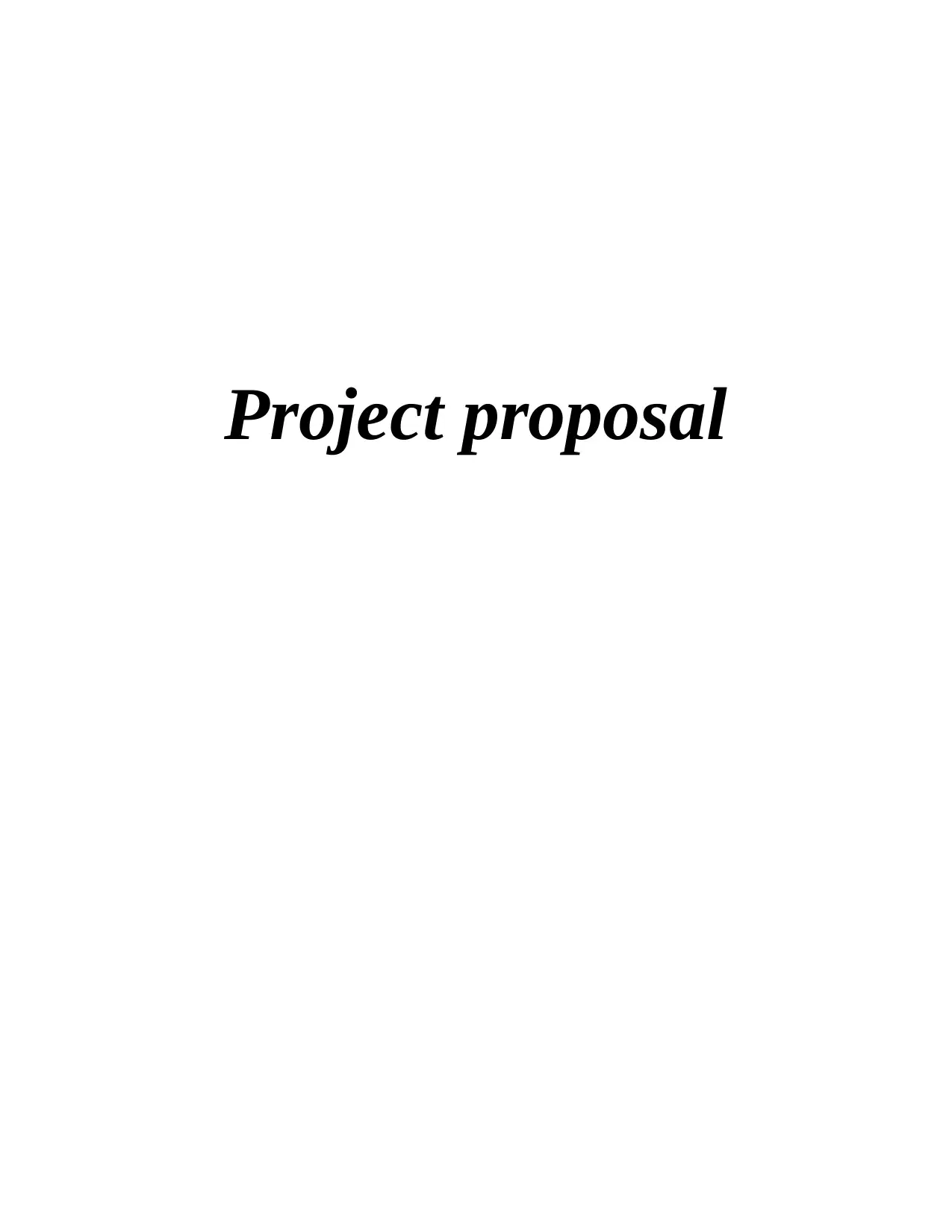
Project proposal
Paraphrase This Document
Need a fresh take? Get an instant paraphrase of this document with our AI Paraphraser
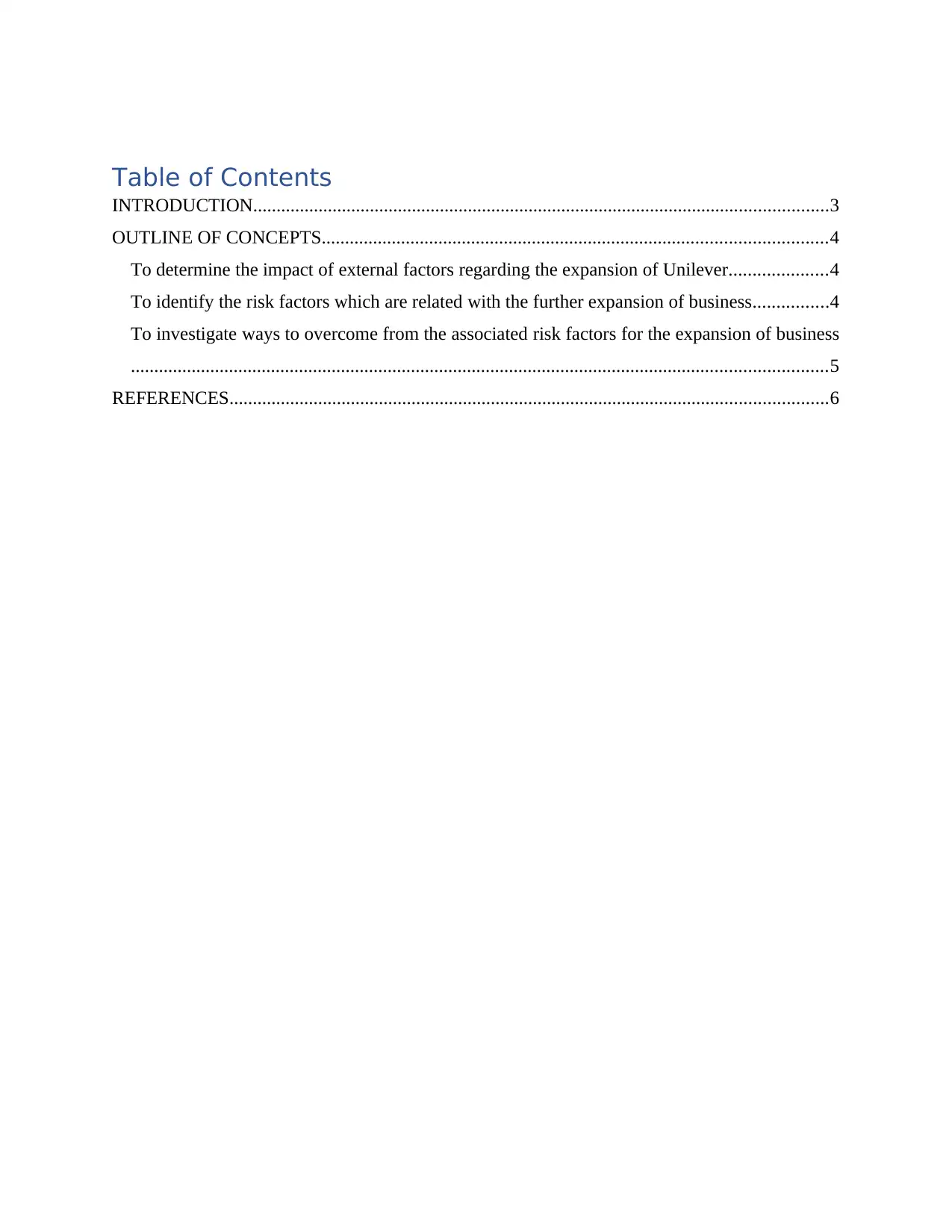
Table of Contents
INTRODUCTION...........................................................................................................................3
OUTLINE OF CONCEPTS............................................................................................................4
To determine the impact of external factors regarding the expansion of Unilever.....................4
To identify the risk factors which are related with the further expansion of business................4
To investigate ways to overcome from the associated risk factors for the expansion of business
.....................................................................................................................................................5
REFERENCES................................................................................................................................6
INTRODUCTION...........................................................................................................................3
OUTLINE OF CONCEPTS............................................................................................................4
To determine the impact of external factors regarding the expansion of Unilever.....................4
To identify the risk factors which are related with the further expansion of business................4
To investigate ways to overcome from the associated risk factors for the expansion of business
.....................................................................................................................................................5
REFERENCES................................................................................................................................6
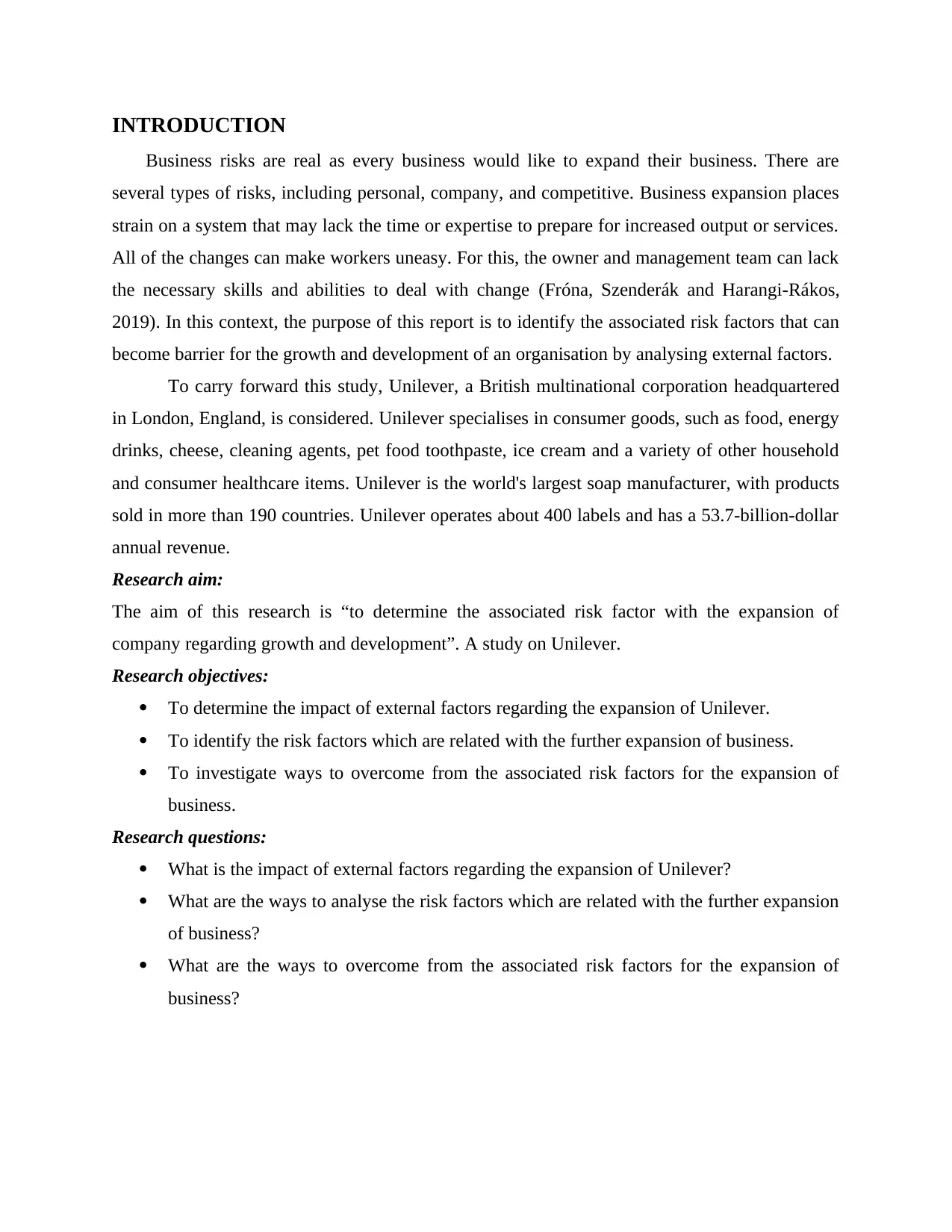
INTRODUCTION
Business risks are real as every business would like to expand their business. There are
several types of risks, including personal, company, and competitive. Business expansion places
strain on a system that may lack the time or expertise to prepare for increased output or services.
All of the changes can make workers uneasy. For this, the owner and management team can lack
the necessary skills and abilities to deal with change (Fróna, Szenderák and Harangi-Rákos,
2019). In this context, the purpose of this report is to identify the associated risk factors that can
become barrier for the growth and development of an organisation by analysing external factors.
To carry forward this study, Unilever, a British multinational corporation headquartered
in London, England, is considered. Unilever specialises in consumer goods, such as food, energy
drinks, cheese, cleaning agents, pet food toothpaste, ice cream and a variety of other household
and consumer healthcare items. Unilever is the world's largest soap manufacturer, with products
sold in more than 190 countries. Unilever operates about 400 labels and has a 53.7-billion-dollar
annual revenue.
Research aim:
The aim of this research is “to determine the associated risk factor with the expansion of
company regarding growth and development”. A study on Unilever.
Research objectives:
To determine the impact of external factors regarding the expansion of Unilever.
To identify the risk factors which are related with the further expansion of business.
To investigate ways to overcome from the associated risk factors for the expansion of
business.
Research questions:
What is the impact of external factors regarding the expansion of Unilever?
What are the ways to analyse the risk factors which are related with the further expansion
of business?
What are the ways to overcome from the associated risk factors for the expansion of
business?
Business risks are real as every business would like to expand their business. There are
several types of risks, including personal, company, and competitive. Business expansion places
strain on a system that may lack the time or expertise to prepare for increased output or services.
All of the changes can make workers uneasy. For this, the owner and management team can lack
the necessary skills and abilities to deal with change (Fróna, Szenderák and Harangi-Rákos,
2019). In this context, the purpose of this report is to identify the associated risk factors that can
become barrier for the growth and development of an organisation by analysing external factors.
To carry forward this study, Unilever, a British multinational corporation headquartered
in London, England, is considered. Unilever specialises in consumer goods, such as food, energy
drinks, cheese, cleaning agents, pet food toothpaste, ice cream and a variety of other household
and consumer healthcare items. Unilever is the world's largest soap manufacturer, with products
sold in more than 190 countries. Unilever operates about 400 labels and has a 53.7-billion-dollar
annual revenue.
Research aim:
The aim of this research is “to determine the associated risk factor with the expansion of
company regarding growth and development”. A study on Unilever.
Research objectives:
To determine the impact of external factors regarding the expansion of Unilever.
To identify the risk factors which are related with the further expansion of business.
To investigate ways to overcome from the associated risk factors for the expansion of
business.
Research questions:
What is the impact of external factors regarding the expansion of Unilever?
What are the ways to analyse the risk factors which are related with the further expansion
of business?
What are the ways to overcome from the associated risk factors for the expansion of
business?
⊘ This is a preview!⊘
Do you want full access?
Subscribe today to unlock all pages.

Trusted by 1+ million students worldwide
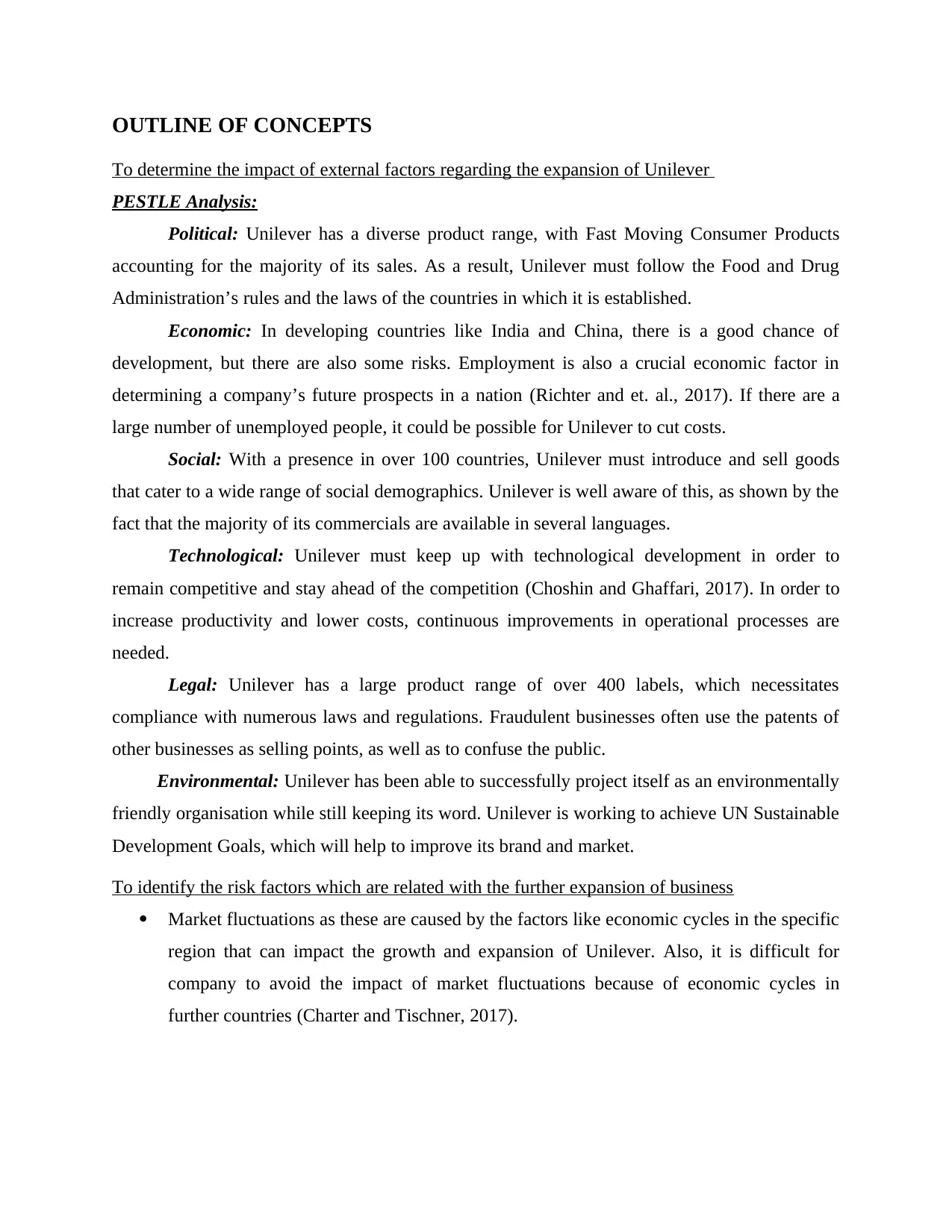
OUTLINE OF CONCEPTS
To determine the impact of external factors regarding the expansion of Unilever
PESTLE Analysis:
Political: Unilever has a diverse product range, with Fast Moving Consumer Products
accounting for the majority of its sales. As a result, Unilever must follow the Food and Drug
Administration’s rules and the laws of the countries in which it is established.
Economic: In developing countries like India and China, there is a good chance of
development, but there are also some risks. Employment is also a crucial economic factor in
determining a company’s future prospects in a nation (Richter and et. al., 2017). If there are a
large number of unemployed people, it could be possible for Unilever to cut costs.
Social: With a presence in over 100 countries, Unilever must introduce and sell goods
that cater to a wide range of social demographics. Unilever is well aware of this, as shown by the
fact that the majority of its commercials are available in several languages.
Technological: Unilever must keep up with technological development in order to
remain competitive and stay ahead of the competition (Choshin and Ghaffari, 2017). In order to
increase productivity and lower costs, continuous improvements in operational processes are
needed.
Legal: Unilever has a large product range of over 400 labels, which necessitates
compliance with numerous laws and regulations. Fraudulent businesses often use the patents of
other businesses as selling points, as well as to confuse the public.
Environmental: Unilever has been able to successfully project itself as an environmentally
friendly organisation while still keeping its word. Unilever is working to achieve UN Sustainable
Development Goals, which will help to improve its brand and market.
To identify the risk factors which are related with the further expansion of business
Market fluctuations as these are caused by the factors like economic cycles in the specific
region that can impact the growth and expansion of Unilever. Also, it is difficult for
company to avoid the impact of market fluctuations because of economic cycles in
further countries (Charter and Tischner, 2017).
To determine the impact of external factors regarding the expansion of Unilever
PESTLE Analysis:
Political: Unilever has a diverse product range, with Fast Moving Consumer Products
accounting for the majority of its sales. As a result, Unilever must follow the Food and Drug
Administration’s rules and the laws of the countries in which it is established.
Economic: In developing countries like India and China, there is a good chance of
development, but there are also some risks. Employment is also a crucial economic factor in
determining a company’s future prospects in a nation (Richter and et. al., 2017). If there are a
large number of unemployed people, it could be possible for Unilever to cut costs.
Social: With a presence in over 100 countries, Unilever must introduce and sell goods
that cater to a wide range of social demographics. Unilever is well aware of this, as shown by the
fact that the majority of its commercials are available in several languages.
Technological: Unilever must keep up with technological development in order to
remain competitive and stay ahead of the competition (Choshin and Ghaffari, 2017). In order to
increase productivity and lower costs, continuous improvements in operational processes are
needed.
Legal: Unilever has a large product range of over 400 labels, which necessitates
compliance with numerous laws and regulations. Fraudulent businesses often use the patents of
other businesses as selling points, as well as to confuse the public.
Environmental: Unilever has been able to successfully project itself as an environmentally
friendly organisation while still keeping its word. Unilever is working to achieve UN Sustainable
Development Goals, which will help to improve its brand and market.
To identify the risk factors which are related with the further expansion of business
Market fluctuations as these are caused by the factors like economic cycles in the specific
region that can impact the growth and expansion of Unilever. Also, it is difficult for
company to avoid the impact of market fluctuations because of economic cycles in
further countries (Charter and Tischner, 2017).
Paraphrase This Document
Need a fresh take? Get an instant paraphrase of this document with our AI Paraphraser
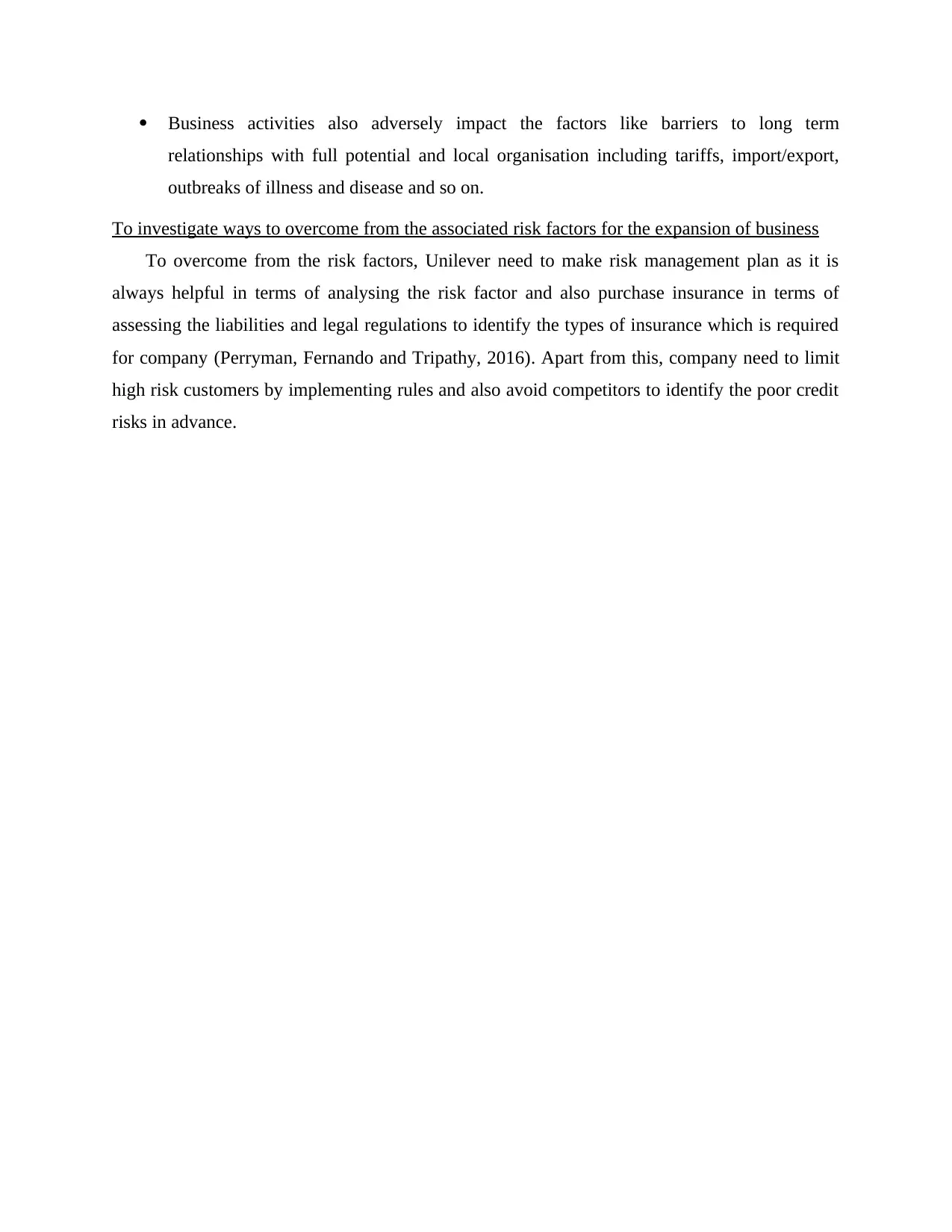
Business activities also adversely impact the factors like barriers to long term
relationships with full potential and local organisation including tariffs, import/export,
outbreaks of illness and disease and so on.
To investigate ways to overcome from the associated risk factors for the expansion of business
To overcome from the risk factors, Unilever need to make risk management plan as it is
always helpful in terms of analysing the risk factor and also purchase insurance in terms of
assessing the liabilities and legal regulations to identify the types of insurance which is required
for company (Perryman, Fernando and Tripathy, 2016). Apart from this, company need to limit
high risk customers by implementing rules and also avoid competitors to identify the poor credit
risks in advance.
relationships with full potential and local organisation including tariffs, import/export,
outbreaks of illness and disease and so on.
To investigate ways to overcome from the associated risk factors for the expansion of business
To overcome from the risk factors, Unilever need to make risk management plan as it is
always helpful in terms of analysing the risk factor and also purchase insurance in terms of
assessing the liabilities and legal regulations to identify the types of insurance which is required
for company (Perryman, Fernando and Tripathy, 2016). Apart from this, company need to limit
high risk customers by implementing rules and also avoid competitors to identify the poor credit
risks in advance.

REFERENCES
Books and Journals
Charter, M. and Tischner, U. eds., 2017. Sustainable solutions: developing products and services
for the future. Routledge.
Choshin, M. and Ghaffari, A., 2017. An investigation of the impact of effective factors on the
success of e-commerce in small-and medium-sized companies. Computers in Human
Behavior, 66, pp.67-74.
Fróna, D., Szenderák, J. and Harangi-Rákos, M., 2019. The challenge of feeding the
world. Sustainability, 11(20), p.5816.
Perryman, A.A., Fernando, G.D. and Tripathy, A., 2016. Do gender differences persist? An
examination of gender diversity on firm performance, risk, and executive
compensation. Journal of Business Research, 69(2), pp.579-586.
Richter, L.M and et. al., 2017. Investing in the foundation of sustainable development: pathways
to scale up for early childhood development. The lancet, 389(10064), pp.103-118.
Books and Journals
Charter, M. and Tischner, U. eds., 2017. Sustainable solutions: developing products and services
for the future. Routledge.
Choshin, M. and Ghaffari, A., 2017. An investigation of the impact of effective factors on the
success of e-commerce in small-and medium-sized companies. Computers in Human
Behavior, 66, pp.67-74.
Fróna, D., Szenderák, J. and Harangi-Rákos, M., 2019. The challenge of feeding the
world. Sustainability, 11(20), p.5816.
Perryman, A.A., Fernando, G.D. and Tripathy, A., 2016. Do gender differences persist? An
examination of gender diversity on firm performance, risk, and executive
compensation. Journal of Business Research, 69(2), pp.579-586.
Richter, L.M and et. al., 2017. Investing in the foundation of sustainable development: pathways
to scale up for early childhood development. The lancet, 389(10064), pp.103-118.
⊘ This is a preview!⊘
Do you want full access?
Subscribe today to unlock all pages.

Trusted by 1+ million students worldwide
1 out of 6
Related Documents
Your All-in-One AI-Powered Toolkit for Academic Success.
+13062052269
info@desklib.com
Available 24*7 on WhatsApp / Email
![[object Object]](/_next/static/media/star-bottom.7253800d.svg)
Unlock your academic potential
Copyright © 2020–2025 A2Z Services. All Rights Reserved. Developed and managed by ZUCOL.




